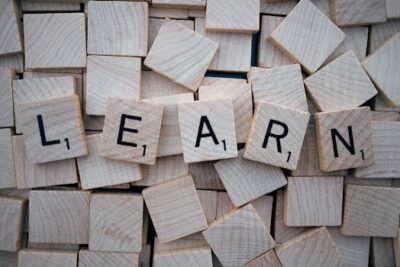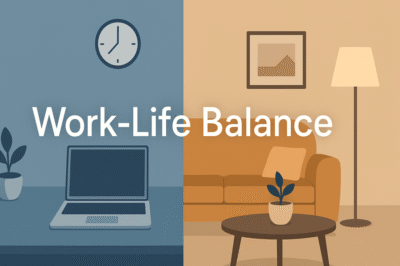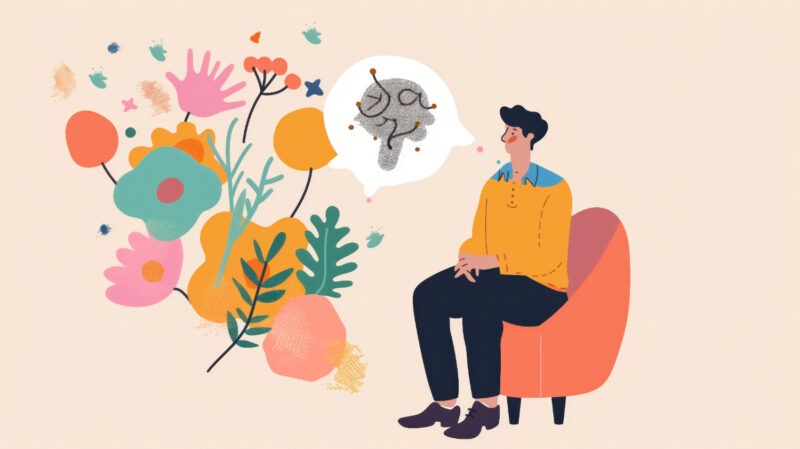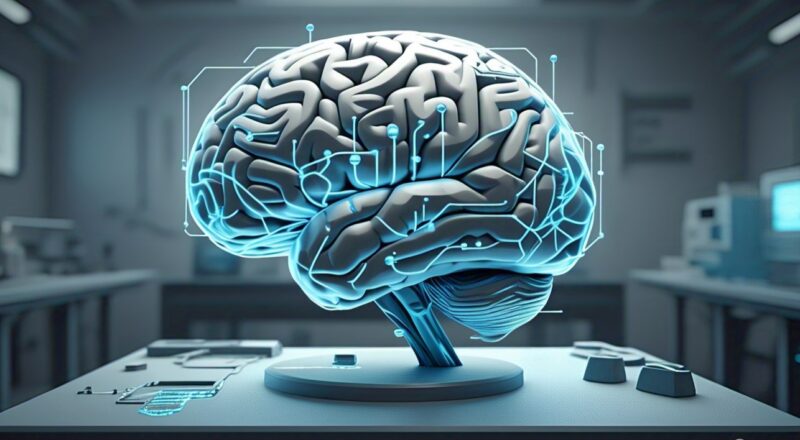Introduction: (empathy brain connection)
Have you ever felt a genuine pang of distress upon seeing a friend receive bad news, or a surge of warmth when a stranger was shown a kindness? This profound human experience, the ability to resonate with the feelings of another, is not a vague sentiment. It is a sophisticated and observable process firing across a network of circuits within your very own mind.
The empathy brain connection is the intricate biological wiring that allows us to step outside of ourselves and share in the emotional and cognitive world of another person. This article will not just define this connection; it will explore how it functions and how you can consciously engage with this remarkable human capacity.
Table of contents
1. The Core of the Empathy Brain Connection
To truly grasp how to foster this ability, we first need to understand the machinery at work. The feeling of empathy is not a single event in a single spot but a symphony of activity across several key brain regions. When we connect with someone, our brain is hard at work.
1.1 What Is Happening Inside Your Head?
When you witness an emotion in someone else, your brain doesn’t just passively register it. Specialized brain cells, sometimes called ‘mirror neurons’, and broader networks become active. They attempt to simulate or mirror the state of the other person’s mind. Think of it as your brain creating a temporary model of their experience. Four key areas are consistently involved:
- The Anterior Insula (AI): This region is deeply linked to our awareness of our own body’s feelings—our heartbeat, a knot in our stomach, a sense of warmth. When we see an emotion in another, the AI helps generate a similar internal feeling in us, forming the basis of emotional sharing.
- The Anterior Cingulate Cortex (ACC): Often working in tandem with the AI, the ACC is involved in the emotional significance of an event. It helps us feel the “pain” or “joy” of an experience, whether it’s our own or someone else’s. It’s a core hub in the empathy brain connection.
- The Temporoparietal Junction (TPJ): This area is crucial for distinguishing between our own self and others. It allows us to understand that the feeling we are simulating is their feeling, not ours. It’s essential for taking someone else’s perspective.
- The Prefrontal Cortex (PFC): Located at the front of the brain, the PFC is our regulation center. It helps us analyze the situation, understand the context, and decide how to respond. It stops us from being completely overwhelmed by the mirrored emotion.
1.2 Differentiating Two Key Empathy Pathways
The empathy brain connection isn’t a single pathway; it operates along two distinct but interconnected routes. Understanding this difference is key to developing a more balanced and effective sense of connection.
- Affective Empathy: This is the “feeling with” component. When you see a colleague, let’s call him Kenji, slump his shoulders after a difficult phone call and you feel a corresponding dip in your own mood, that is affective empathy. It is a visceral, emotional resonance, primarily driven by the Anterior Insula and Anterior Cingulate Cortex. It’s a fast, automatic response.
- Cognitive Empathy: This is the “understanding of” component. It involves consciously trying to comprehend another person’s perspective. For instance, you might think, “Kenji was likely speaking with that challenging client, and he is probably worried about the project deadline.” This is cognitive empathy. It is a more deliberate process, orchestrated by the Prefrontal Cortex and the Temporoparietal Junction. It allows you to understand why someone feels the way they do, even if you don’t feel the exact same emotion.
2. How Can You Actively Engage Your Empathy Brain Connection?
Understanding the “what” is the first step. The “how” is where we can make a tangible difference in our interactions. Engaging your empathy brain connection is a skill that can be cultivated through conscious practice.
2.1 The Power of Focused Observation
Often, we miss crucial emotional data because we are not truly paying attention. To activate your empathy brain connection, start by observing more intentionally during conversations. This doesn’t mean staring but simply noticing. Pay attention to:
- Facial Expressions: Beyond the obvious smile or frown, look for subtle cues like a tensed jaw, furrowed brow, or tightened lips.
- Tone of Voice: Listen not just to the words but to the pitch, pace, and volume. A faster pace might signal excitement or anxiety, while a lower volume could indicate sadness or uncertainty.
- Posture: Notice how someone holds themselves. Are their shoulders hunched forward or pulled back? Are their arms crossed defensively or open?
By actively gathering this data, you provide your brain with the raw material it needs to begin mirroring and understanding the other person’s state.
2.2 The Art of Perspective-Taking: A Practical Exercise
Cognitive empathy can be strengthened with targeted exercises. Here is a simple but powerful one you can do.
Think of someone you interacted with recently, perhaps a family member named Fatima who seemed distracted. For the next 5 minutes, try to step into her shoes.
- Sit in a quiet place and close your eyes.
- Imagine you are Fatima. What might her day have been like before you saw her?
- Consider the pressures she might be under—work, family, personal goals.
- From her perspective, what might she be thinking or worrying about? Try to formulate “I” statements from her viewpoint (e.g., “I am worried I won’t finish this report on time”).
This exercise directly stimulates the Temporoparietal Junction and Prefrontal Cortex, building up the mental muscle for cognitive empathy.
3. Common Myths and Hurdles of the Empathy Brain Connection
Developing this connection also means understanding its limitations and the common misconceptions that can hinder it.
3.1 Myth: Empathy Is an Unlimited Resource
A very common belief is that we should be able to feel for everyone, all the time. However, the brain is a biological organ with finite resources. The intense activation of the AI and ACC when we repeatedly witness distress can lead to a state of emotional exhaustion, often called “empathy fatigue.” A 2019 study conducted by researchers at the Max Planck Institute for Human Cognitive and Brain Sciences showed that training in compassion and perspective-taking (cognitive empathy) could help mitigate the burnout associated with purely affective empathy, especially for those in caregiving roles. This demonstrates that we need to manage our empathetic responses to sustain them.
3.2 The “Us vs. Them” Barrier: How Groups Affect Your Brain
Neuroscience reveals a challenging truth: our empathy brain connection is not always fair. Research using brain imaging has consistently shown that the empathy-related circuits, like the Anterior Insula, fire more strongly for people we perceive as part of our “in-group” (e.g., people from our same city, profession, or background) than for those in an “out-group.” This is not a conscious choice but a deeply ingrained biological tendency. Recognizing this bias is the first step toward consciously overriding it by actively seeking common ground and individual stories with those who seem different from us.
4. Strengthening Your Empathy Brain Connection Over Time
Building a stronger empathy brain connection is a marathon, not a sprint. It involves creating habits that gradually rewire your neural pathways for better understanding and connection.
4.1 The Role of Reading in Rewiring Your Brain
One of the most accessible ways to build cognitive empathy is through reading narrative stories. When you read a well-told story about a character’s life, struggles, and triumphs, your brain works to understand their intentions, beliefs, and emotions. A landmark study published in the journal Science in 2013 by researchers from The New School for Social Research found that participants who read literary fiction performed significantly better on tests measuring their ability to infer what other people were thinking or feeling. Reading stories about different lives and experiences effectively trains your brain’s perspective-taking abilities in a low-stakes environment.
4.2 How Broadening Your Experiences Cultivates Connection
Just as reading about different lives helps, so does experiencing them. Actively seeking out interactions and conversations with people from different walks of life, cultures, and age groups directly challenges the “us vs. them” bias. When you learn about the daily life of a person from a different country or the challenges faced by someone in a completely different profession, your brain updates its models of the world. It builds a richer, more complex understanding of humanity, making it easier to activate the empathy brain connection with a wider circle of people.
4.3 The Simple Habit of Asking Better Questions
Finally, you can strengthen your empathy brain connection by changing the way you converse. Most of us default to simple, closed questions like, “Are you okay?” which usually gets a simple “yes” or “no.” Instead, practice asking open-ended questions that invite deeper reflection.
- Instead of “Did you have a good day?” ask, “What was the most interesting part of your day?”
- Instead of “Are you stressed?” ask, “What’s on your mind regarding this situation?”
These questions encourage the other person to share their internal world, and they prompt you to listen more deeply, actively engaging both the affective and cognitive pathways of empathy.
Conclusion
The empathy brain connection is one of the most remarkable features of our neurobiology. It is not an unchangeable trait that you either have or don’t, but rather a dynamic and trainable skill. By understanding the interplay between feeling with someone and understanding their perspective, we can move beyond simple emotional reactions. We can learn to observe more closely, consciously take on different viewpoints, and ask questions that build bridges of understanding. Cultivating this connection is not merely an exercise in self-improvement; it is a fundamental way to foster more meaningful relationships, build more cohesive communities, and navigate our shared world with greater wisdom and compassion.
References
Warning: The provided links lead only to the specified content. Other areas of those sites may contain material that conflicts with some beliefs or ethics. Please view only the intended page.
- Frontiers in Human Neuroscience – Empathy and Depression Research
- Recent neuroscience research on empathy-related brain circuits and their clinical implications
- Neural correlates of empathy in depression
- Journal of Neuroscience – Social Closeness Study
- Research on how empathy induces stable social connections through brain mechanisms
- Empathy and social closeness research
- Association for Psychological Science – Empathy Neuroscience
- Scientific overview of brain regions responsible for empathic responses
- Neuroscience of empathy research
- Neuroscience News – Emotion Recognition Circuits
- Latest findings on brain circuits involved in recognizing emotions
- Brain emotion recognition study
- Positive Psychology – Mirror Neurons and Empathy
- Research on mirror neurons and their role in human empathy development
- Mirror neurons empathy research


















